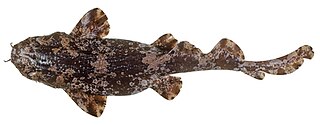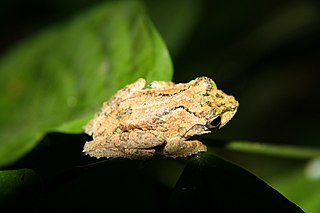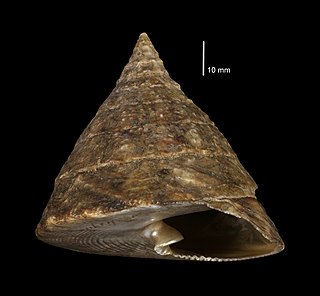
A tuna is a saltwater fish that belongs to the tribe Thunnini, a subgrouping of the Scombridae (mackerel) family. The Thunnini comprise 15 species across five genera, the sizes of which vary greatly, ranging from the bullet tuna up to the Atlantic bluefin tuna, which averages 2 m (6.6 ft) and is believed to live up to 50 years.

Mackerel is a common name applied to a number of different species of pelagic fish, mostly from the family Scombridae. They are found in both temperate and tropical seas, mostly living along the coast or offshore in the oceanic environment.

Herring are forage fish, mostly belonging to the family of Clupeidae.

Lake Victoria is one of the African Great Lakes. With a surface area of approximately 59,947 km2 (23,146 sq mi), Lake Victoria is Africa's largest lake by area, the world's largest tropical lake, and the world's second-largest fresh water lake by surface area after Lake Superior in North America. In terms of volume, Lake Victoria is the world's ninth-largest continental lake, containing about 2,424 km3 (1.965×109 acre⋅ft) of water. Lake Victoria occupies a shallow depression in Africa. The lake has an average depth of 40 m (130 ft) and a maximum depth of 80–81 m (262–266 ft). Its catchment area covers 169,858 km2 (65,583 sq mi). The lake has a shoreline of 7,142 km (4,438 mi) when digitized at the 1:25,000 level, with islands constituting 3.7% of this length.

Sardine and pilchard are common names for various species of small, oily forage fish in the herring family Clupeidae. The term sardine was first used in English during the early 15th century; a somewhat dubious folk etymology says it comes from the Italian island of Sardinia, around which sardines were once supposedly abundant.

The black-headed lapwing or black-headed plover is a large lapwing, a group of largish waders in the family Charadriidae. It is a resident breeder across sub-Saharan Africa from Senegal to Ethiopia, although it has seasonal movements. It lays two or three eggs on a ground scrape.

Wobbegong is the common name given to the 12 species of carpet sharks in the family Orectolobidae. They are found in shallow temperate and tropical waters of the western Pacific Ocean and eastern Indian Ocean, chiefly around Australia and Indonesia, although one species occurs as far north as Japan. The word wobbegong is believed to come from an Australian Aboriginal language, meaning "shaggy beard", referring to the growths around the mouth of the shark of the western Pacific.

The pygmy shark, the second-smallest of all the shark species after the dwarf lanternshark, is a squaliform shark of the family Dalatiidae, the only member of the genus Euprotomicrus. Their lengths are up to about 25 cm (10 in) for females and about 22 cm (8.7 in) for males.

The cobbler wobbegong, Sutorectus tentaculatus, is a carpet shark in the family Orectolobidae, the only member of the genus Sutorectus. It is found in the subtropical eastern Indian Ocean around Western Australia between latitudes 26° S and 35° S. It is frequently found in rocky and coral reef areas. Cobbler wobbegongs reach a length of 92 cm. It has unbranched dermal lobes on the head, rows of warty tubercles along the back and black spots on the body and fins.

The longnose catshark is a catshark of the family Scyliorhinidae found in the eastern central Pacific from central and southern California and the Gulf of California, between latitudes 38° N and 23° N, at depths down to 1,890. Its length is up to 58 cm.

Philautus tectus is a species of frog in the family Rhacophoridae. It is found in Brunei and Malaysia. Its natural habitat is subtropical or tropical moist lowland forests. It is threatened by habitat loss.

The pied puffbird is a species of bird in the family Bucconidae, the puffbirds, nunlets, and nunbirds. It is found in Bolivia, Brazil, Colombia, Costa Rica, Ecuador, French Guiana, Guyana, Nicaragua, Panama, Peru, Suriname, and Venezuela.

An anchovy is a small, common forage fish of the family Engraulidae. Most species are found in marine waters, but several will enter brackish water, and some in South America are restricted to fresh water.

Tectus is a genus of sea snails, marine gastropod mollusks in the family Tegulidae.
The black snake mackerel is a species of snake mackerel found worldwide in both tropical and temperate waters where they are found at depths of from 914 to 1,646 metres making diel vertical migrations from mesopelagic depths to the surface at night. It can reach a length of 25 centimetres (9.8 in) SL though most do not exceed 15 centimetres (5.9 in) SL. It is important to local peoples as a food fish. This species is currently the only known member of its genus, Nealotus. That genus is therefore said to be monotypic.
The diamond mullet, is a species of mullet and is also known as the Ord River mullet. This species lives in both brackish or freshwater. Adult fish are found in estuaries, coastal waters and in some cases, ascending rivers into fresh water.
Chelon bispinosus is a fish of the family Mugilidae. It is one of seven species in the genus Chelon. It is endemic to waters near Cape Verde in the east central Atlantic Ocean. This species is found in the neritic zone.














